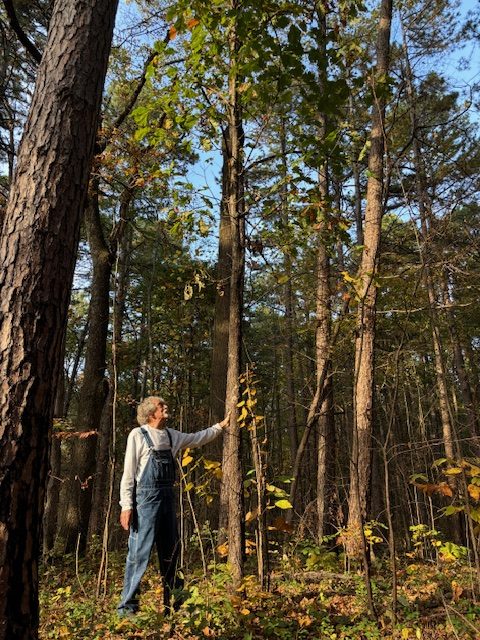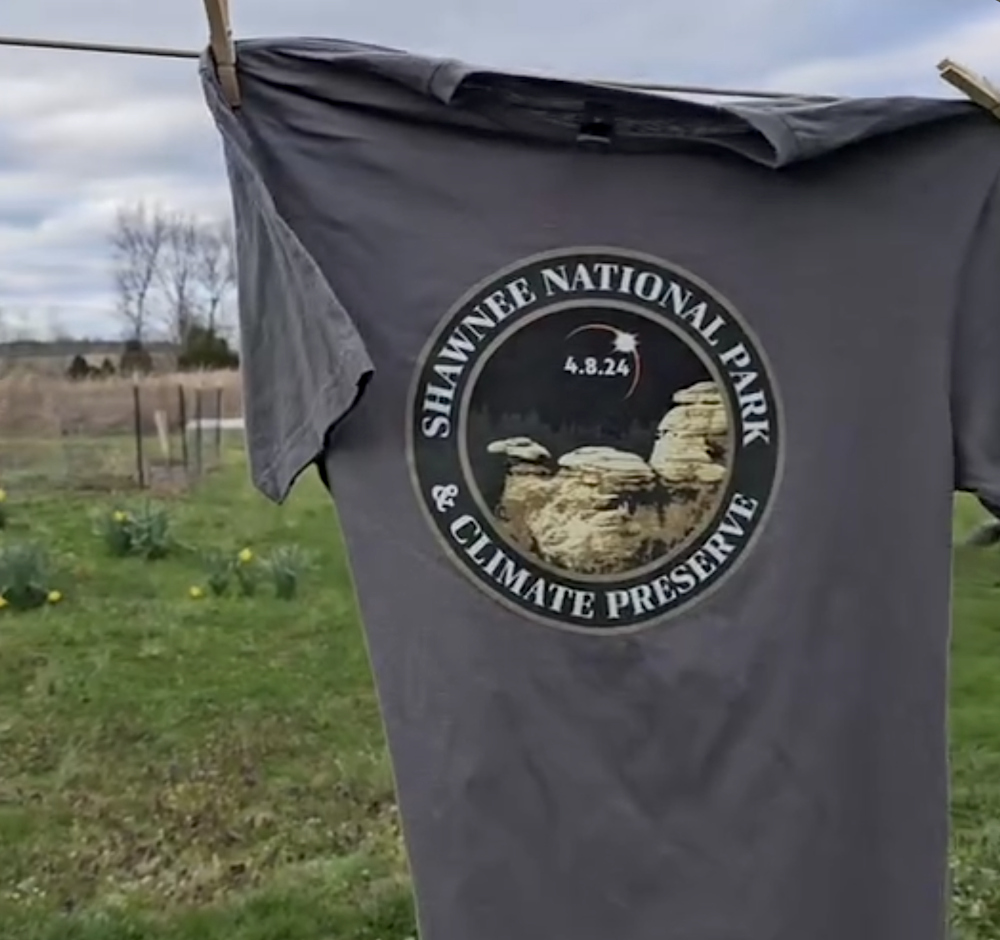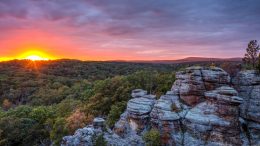Pope County, Illinois — Dressed in his trademark blue denim overalls, former coal miner Sam Stearns recently took me to a cleared logging road adjacent to the Bell Smith Springs area, a National Natural Landmark in the Shawnee National Forest.

Stearns, a long-time forest advocate, pointed out how invasive species had swarmed the area under the current “cut, burn, and spray” national forest policies, while mature oaks planted in the time of his parents were earmarked for meager timber sales.
Three decades ago, Stearns was one of the leaders of a successful campaign to win a federal injunction that prohibited logging in the area from 1996 to 2013.
Today he radiates a sense of excitement for a new movement to put aside politics and unite a broad coalition over a common love for a region’s natural resources.
That movement has brought together other veteran campaigners for black lung legislation, forest protection, and clean water regulations in communities who have carried the burden of the toxic fallout from the region’s coal industry over the past two centuries.
By working together, they hope to turn Shawnee National Forest into a national park, and then into the nation’s first “Climate Preserve.”
It’s a welcome counterpoint to the doom and gloom felt in many other environmental movements.
A New Concept Draws on Past Success
The Climate Preserve concept draws from the success of national preserves: protected areas in the United States that allow a limited amount of activities like hunting and logging, with rules varying for each preserve.

The process to establish the first national preserves was started by Republican President Richard Nixon and completed by President Gerald Ford in 1974. Last fall marked the 50th anniversary of two national preserves: Big Cypress National Preserve in Florida, which was ushered in by Nixon’s long-time advocacy to protect a swamp the size of Rhode Island as a national treasure, and Big Thicket National Preserve in Texas, the result of a political compromise led by Rep. Charlie “Timber” Wilson and Republican Sen. John Tower that protects designated areas from logging but allows for more expansive use than national parks.
The modern-day movement in southern Illinois calls for the 289,000-acre Shawnee National Forest, currently administered by the U.S. Department of Agriculture, to be re-designated Shawnee National Park and Climate Preserve and placed under the auspices of the Department of the Interior’s National Park Service. The Climate Preserve, in the tradition of other national preserves, would halt CO2-releasing logging; allow the region’s popular traditions of hunting, hiking and birding to continue; ramp up tourism; and strengthen the preservation of old growth and regeneration of forests to more effectively provide CO2 sequestration and storage.
Stearns, no stranger to despair or long-shot bids for change in the coalfields, sees three historical precedents on their side.
First, economics.
Campaign advocates — joined by a fervent movement of former coal miners, farmers, hunters, outdoors enthusiasts, birders and regional tourist operators — see their proposal as a turning point for their economically depressed region and an incredible opportunity for investment and preservation. Local town councils, tourist promoters, outdoors groups and national bird organizations, as well as Republicans and Democrats, have voiced support for the campaign.
The region could use the boost. It’s the most impoverished region in Illinois. Median income in Alexander County, for example, is around $40,000, compared to $70,000 in the rest of the state. Redefining nearly 300,000 acres of forest land would deliver a long overdue economic boost to rural towns and statewide tourism while launching a new legacy for the area’s unique ecosystem and biodiversity.
“The revenues from ecotourism … would dwarf any derived from logging and catalyze an infinitely renewable growth industry for Illinois and especially the residents of what is currently the most depressed economy in the state,” advocates for Shawnee National Park wrote in a briefing document.
Second, history.
Campaigners are quick to note that President Trump signed two similar re-designations in his first term, including the creation of Indiana’s first national park through the bipartisan effort to turn Indiana Dunes National Lakeshore into a national park in 2019.
A year later Trump signed the re-designation of the New River Gorge National Park and Preserve as part of an omnibus spending bill cosponsored by Republicans Rep. Carol Smith and Sen. Shelley Moore, who praised the effort as a way for “major investment” in West Virginia that made the new park a “gold standard of approval and excellence.”
Third, the unique region.
The idea of setting aside what advocates call “land where forests grow as intact ecosystems” draws on the region’s unique position between the Mississippi, Ohio, and Wabash rivers and the Ozark and Cumberland mountain ranges. This “floristic melting pot” includes some of the most diverse forests and fauna found anywhere in the United States.
The area has long been known for its natural resources. At the World’s Columbian Exposition in Chicago in 1893, southern Illinois promoted two main displays: 150 species of native hardwood as symbols of the region’s unusually diverse forests, and a 10-ton chunk of coal hailed as one of the largest ever carted out of a mine.
Those days of coal mining are long over. The forests, thanks to a movement in the 1930s, remain.
In 1931 a government report identified “almost unrelieved, utter economic devastation” and “hopeless poverty” in the region. But small-town mayors, business leaders, civic groups and woodland farmers saw potential in the Shawnee. They knew that regenerating the region’s devastated forest would help jump-start their wrecked economy.
Today’s efforts evoke a similar bipartisan effort by the campaigners’ parents and grandparents in the 1930s to establish the Shawnee National Forest.
But it wasn’t all done in one step: Sixty years later the Illinois Wilderness Act of 1990 — signed into law by Republican President George H.W. Bush, and cosponsored by a local Democrat representative and nine other Republicans — set aside seven areas in the Shawnee National Forest.
The next step for the Shawnee National Park and Climate Preserve is to find similar co-sponsors on both sides of the aisle.
Change takes time, Shawnee forest advocates like Stearns remind me. In the meantime, their fierce power of climate fortitude, rising in the ruins of abandoned strip mines, reminds us not to surrender to hopelessness in hard times.
Or, in the words of the campaigners: “Keep the forest standing.”

Previously in The Revelator:
What’s Being Done to Public Lands Is a Crime

